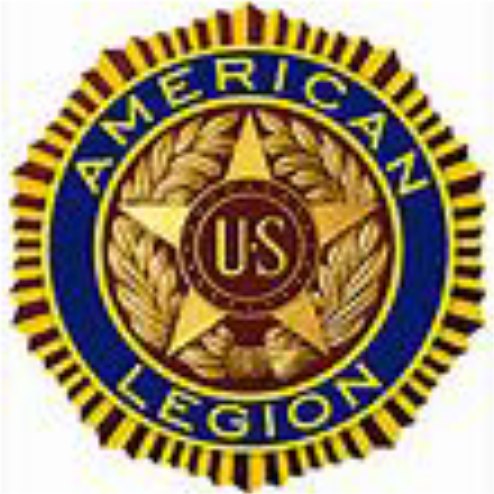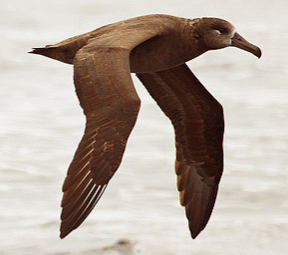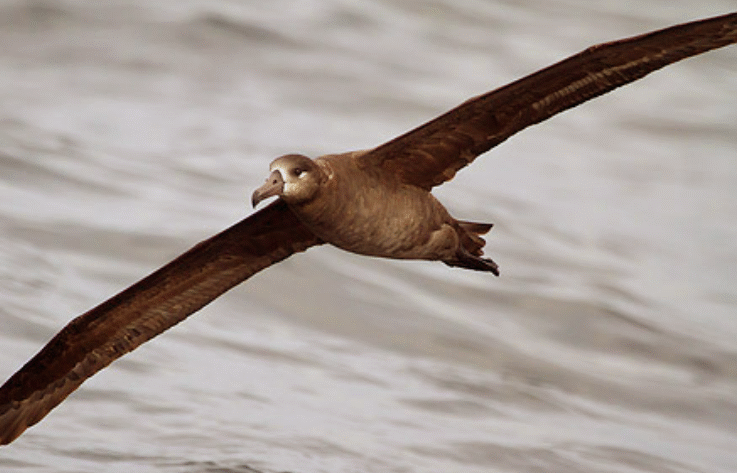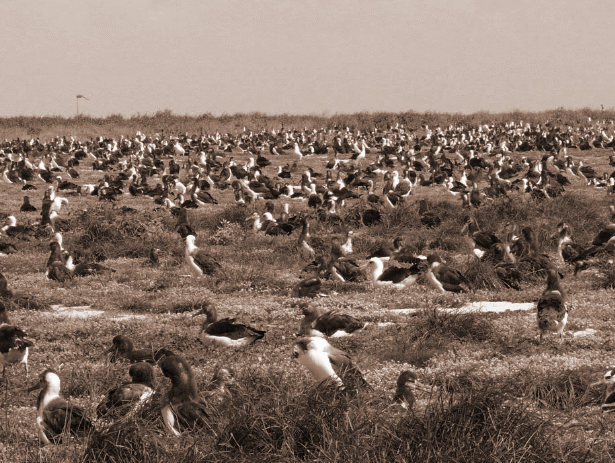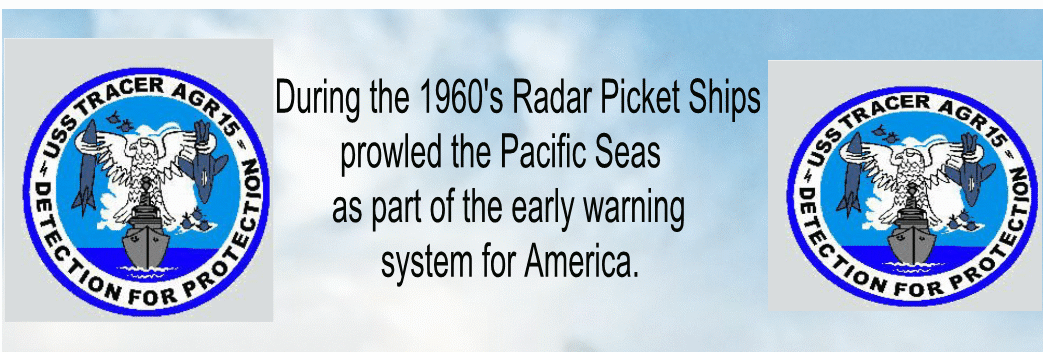More photos from the 1960's:
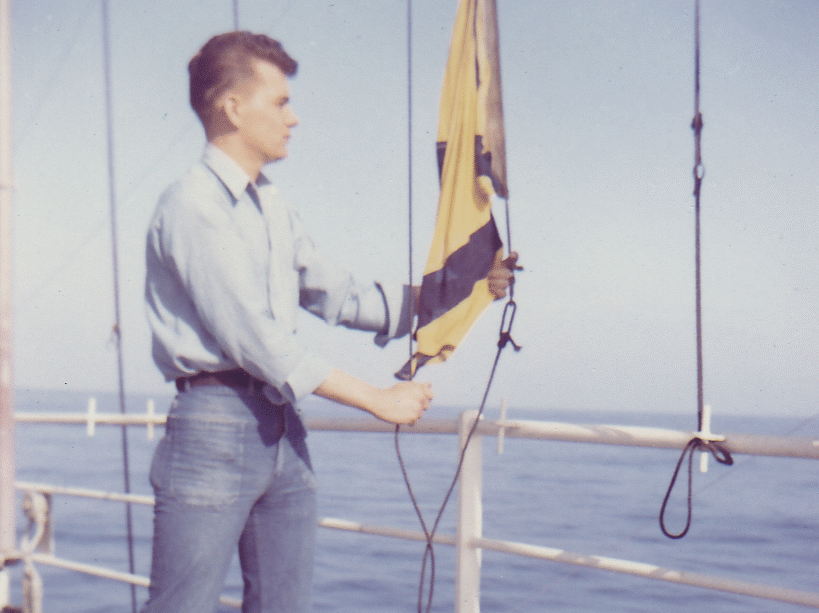
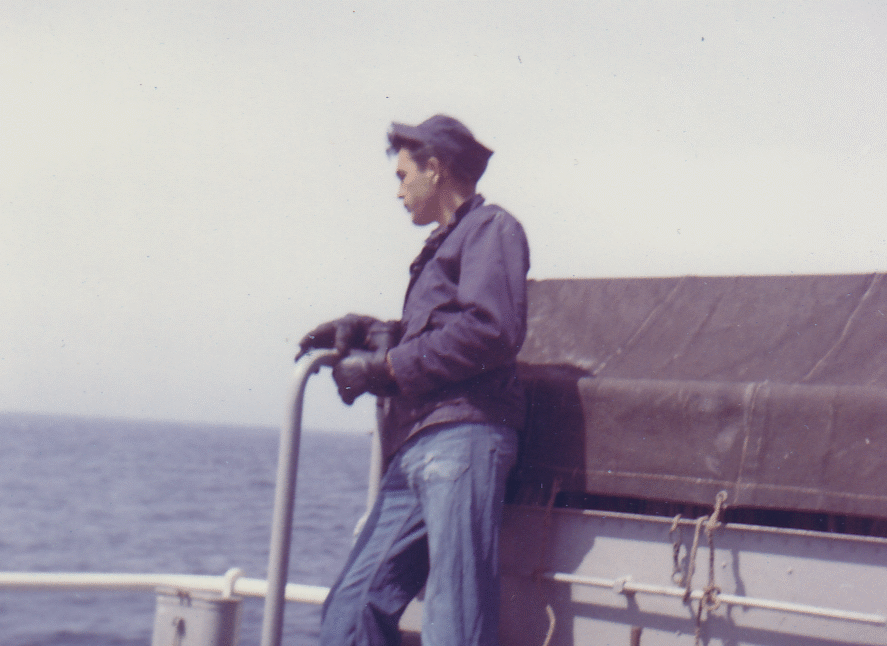
Below (left) is Roland Phillips who was a gunner’s mate striker at the time the photo was taken. Phillips was quite proud to be a gunner’s mate and was responsible for the crossed cannons logo (just below his hand) on the tool locker on Gun Mount 32. Here he is posing beside his artwork. Even Scotty (first class gunner’s mate, who was quite straight-laced) liked the crossed cannons. Scotty was the leading P.O. in the Gunnery Division at the time of the crossed cannon artwork. The photo was taken while the ship was heading out to a long boring picket and the Golden Gate Bridge is visible in the foreground to the right of Phillips’ shoulder. The photo on the right shows the Golden Gate Bridge looming in the foreground. The photo was obviously taken on a day when it was overcast (not unusual for San Francisco). The name of the sailor seen from the back is unknown.
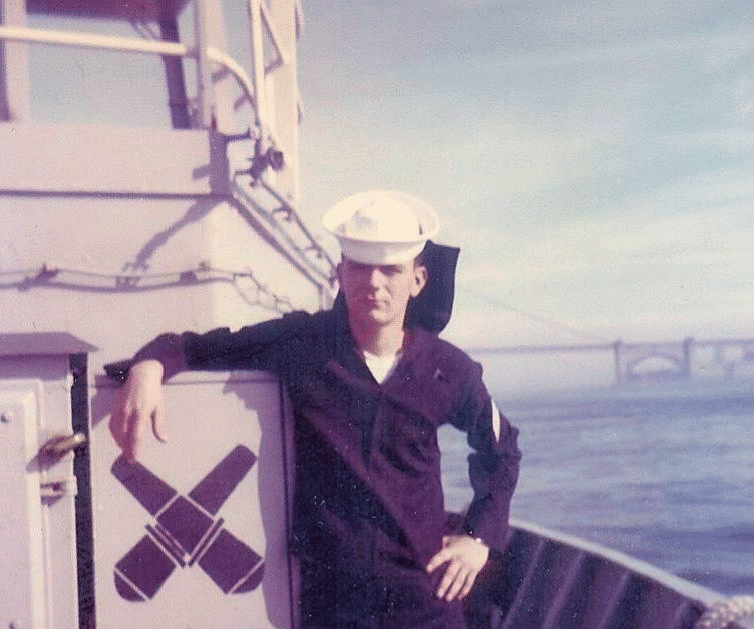
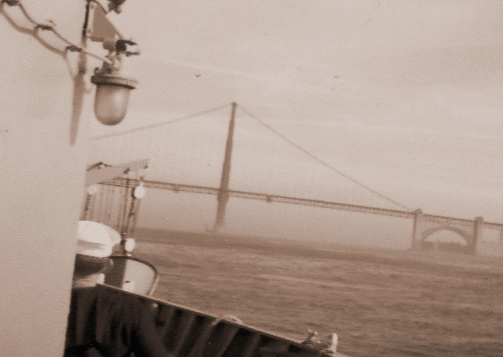
The two photos below are of: on the left, going under the Golden Gate Bridge. The USS Tracer went under the bridge many times in the course of her life. All who sailed aboard her were familiar with the under side of the bridge. The photo on the right shows the bridge in the foreground as the tracer is coming in. The sailor with the earphones on is named Davis, a deck division sailor. here he is shown standing at his station while coming into port. These tow photos were probably taken around the same time. The photo showing Davis with the earphones was taken first then about one half hour later the photo of the underside of the bridge was taken.
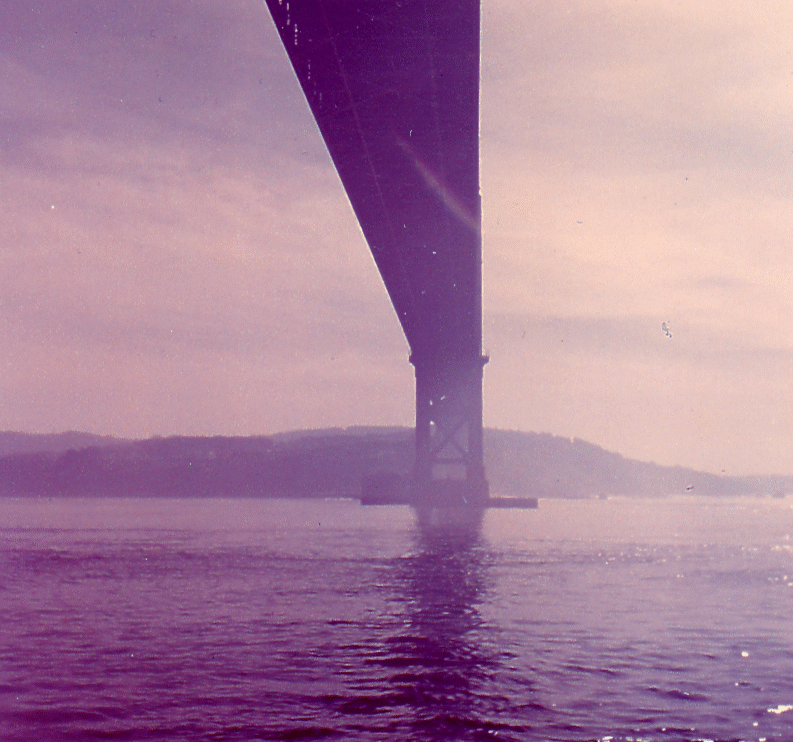
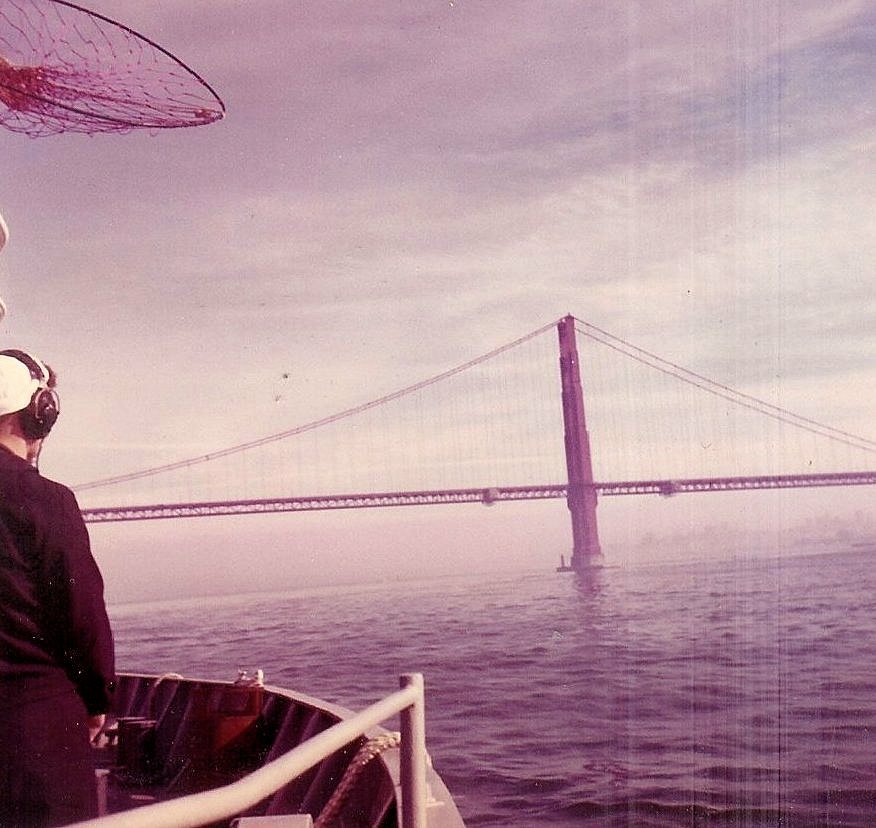
The two photos below are of the bow of the USS Tracer under way. Remember, the Tracer was a converted Liberty Ship, that is: Liberty Ships were freighters used during WWII for ferrying freight across the Atlantic Ocean. These are excellent photos and show amazing detail after fifty years. The great feature here is the king post. On Liberty ships, king posts are upright pairs of masts (upside down “U” shaped masts) with cargo-handling devices attached; horizontal booms pointing upward at forty-five degree angles which can be manipulated out over the pier in order to lift cargo onto the ship and down into the open hatches. On a cargo vessel king posts are designed solely for handling cargo and are most often located in front of the hatch. On the Tracer the king posts were still there but the spars that were used for getting cargo on board are gone. The forward King post on the Tracer is a U shaped mast that dominates the photos. To the left at the bottom is the open hatchway that led down into the Deck Division berthing space areas. If you are able, it is interesting to magnify these photos and look at the details.
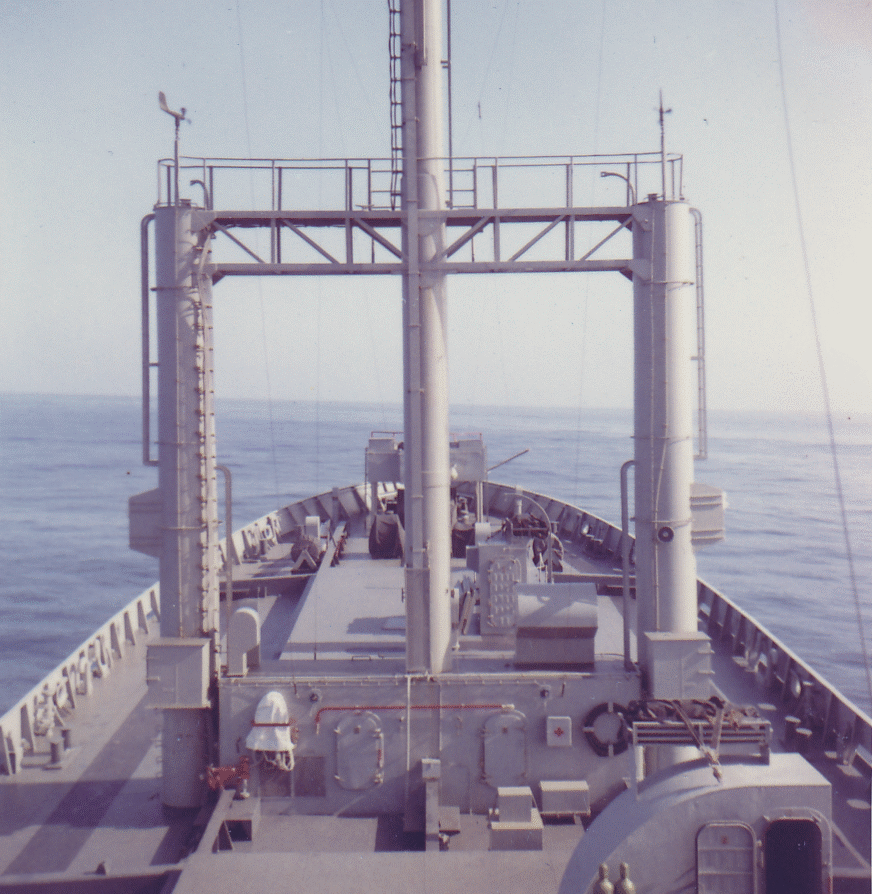
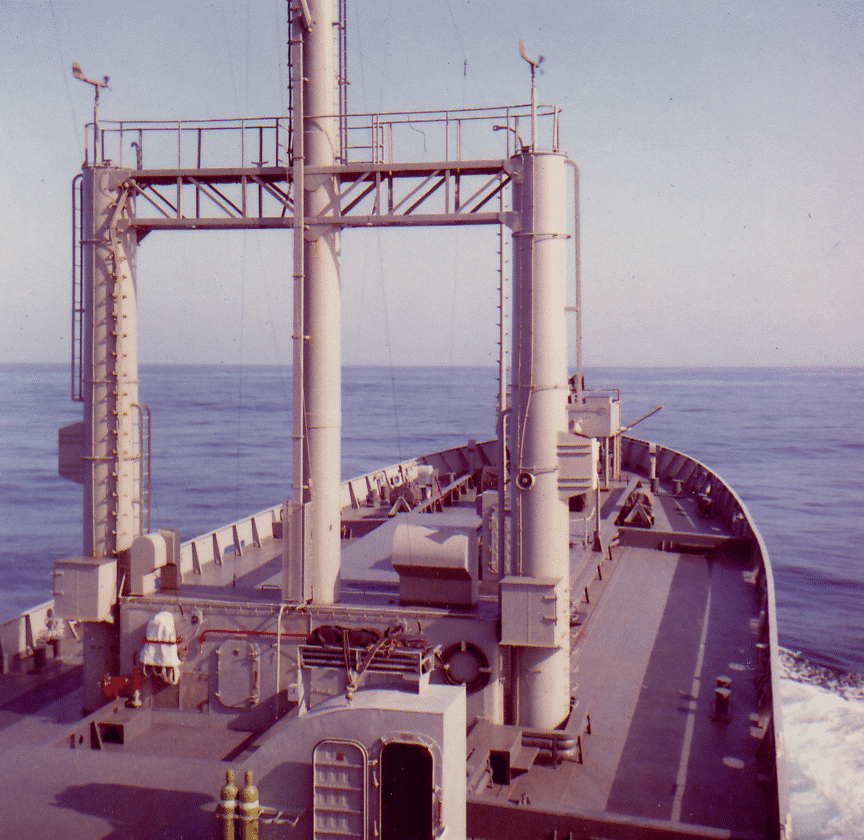
I was on the bridge one day when a group of Deck Division sailors were working forward. A boatswain’s mate named, Corona, sent a young sailor named, Simpson, up the king post forward of the bridge. (see the two photos just above, the king post is the tall center mast. There are two supports, one on each side, with a catwalk running between) Simpson was up there for hours when finally someone noticed he wasn’t painting; he was pushed against the center mast with his hands locked around it in a bear hug. Corona called up to him ordering him to get his gear and come down, but Simpson ignored him. After a while Corona called up to him again but still Simpson did not reply. Finally Corona climbed up the ladder and went over to Simpson. Simpson was frozen up there, his arms locked around the center mast, terrified. It took Corona something like a half hour just to coach the frightened seaman over to the ladder on the port side support post. Then Corona went down on the first few rungs, and with his arms forming a safety belt around Simpson, brought the terrified sailor down the ladder a step or two at a time.

